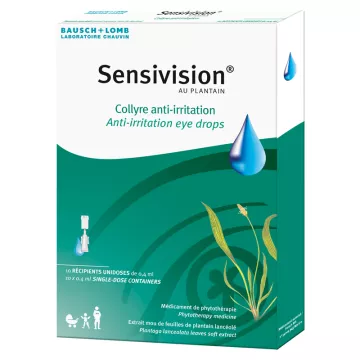
What is eye drops and what are they used for?
Eye drops are liquid preparations used to administer medication or care solutions directly to the surface of the eye. It is generally used to treat a variety of eye conditions, including dry eyes, infections and allergies, and to aid recovery from surgery. Eye drops can contain antibiotics, anti-inflammatories, antihistamines, or simply lubricants and moisturizers to relieve the symptoms of dry eye.
How do I apply eye drops correctly?
Correct application of eye drops is crucial to their effectiveness. Here are the recommended steps:
What precautions should I take when using eye drops?
It's important to follow certain precautions to avoid complications:
What are the different types of eye drops on the market?
There are several types of eye drops, each adapted to specific needs:
What are the possible side effects of eye drops?
Although generally safe, eye drops can cause side effects such as :
How do I choose the right eye drops for my eye symptoms?
The choice of eye drops should be guided by the nature of your symptoms and, ideally, by the recommendations of a healthcare professional. If you suffer from dry eyes, opt for artificial tears or moisturizing eye drops. For allergic reactions, opt for anti-allergic eye drops. In case of infection, antibiotic eye drops will be necessary. It's vital to consult an ophthalmologist for a precise diagnosis and appropriate prescription.
Can eye drops be used with contact lenses?
Some eye drops are not compatible with contact lenses. The preservatives present in many eye drops can accumulate on lenses and cause irritation. We recommend removing lenses before applying eye drops, and reinserting them 15 to 30 minutes later, depending on the type of eye drop used. Eye drops specially formulated for contact lens wearers are also available.
Are there natural eye drops or alternatives to pharmaceutical products?
Yes, there are natural alternatives to traditional eye drops, such as floral waters (cornflower water to soothe tired eyes, for example) or cold compresses to reduce inflammation. However, these methods may offer temporary relief and are not suitable for treating more serious conditions. It's always best to consult a professional before substituting a medical treatment with a natural alternative.
Can I use expired eye drops?
It is not recommended to use eye drops after their expiry date. Expired products can lose their effectiveness and, more worryingly, become contaminated with bacteria or fungi, which can lead to serious eye infections. Always check the expiry date before use, and discard any eye drops that have passed this date.
How do I store my eye drops correctly?
Correct storage of eye drops is essential to ensure their efficacy and safety. Most eye drops should be stored at room temperature, away from direct light and heat. Once opened, some products may need to be stored in the refrigerator - check the instructions on the packaging or consult your pharmacist. It's also important to note that most eye drops should be used within 28 days of opening, unless otherwise indicated by the manufacturer.